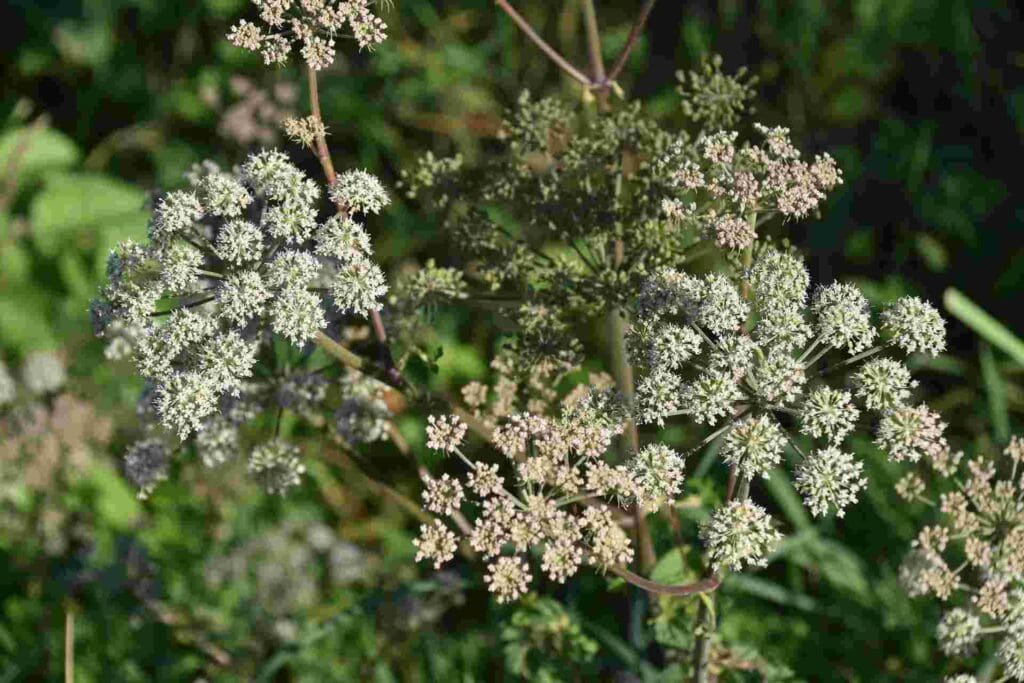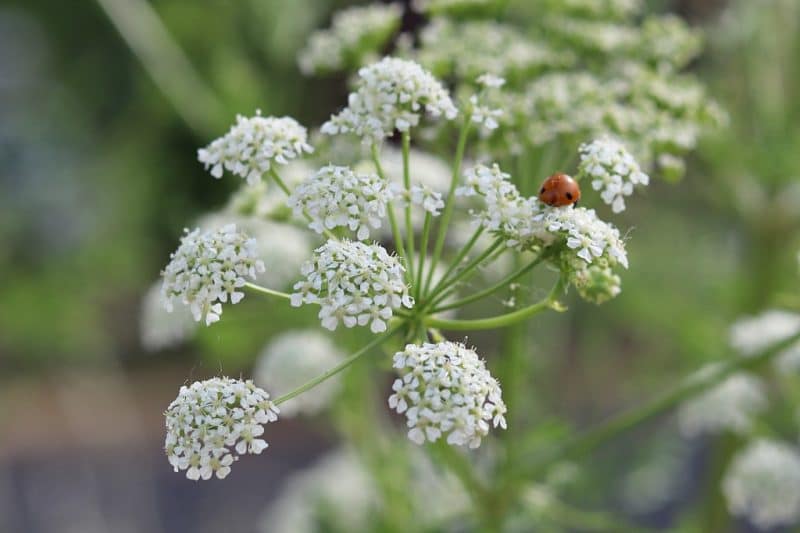Poison Hemlock: A Deadly Plant to Avoid
Poison hemlock is a highly toxic plant from the carrot family, commonly found in neglected areas such as roadsides, fields, and near water bodies. Even a small amount can be fatal to humans, livestock, and wildlife.
Identifying poison hemlock can be tricky, as it resembles carrot plants in its early stages. The stems are tall, reaching 6 to 10 feet, with distinctive reddish-purple spots. Its tiny, umbrella-shaped flowers are typically white or yellow and emit a strong musty smell when crushed.
It’s crucial to be aware of the dangers. Symptoms can arise within 20 minutes to 4 hours after consumption. Notably, Queen Anne’s lace can easily be mistaken for hemlock, so understanding the differences is vital for safety. Always exercise caution when encountering unfamiliar plants in the wild.
Queen Anne’s Lace
Though these two plants look a lot similar thankfully there are some differences to mark to not get confused. For starter the plant has hairy stem structure unlike hemlock and do not have purple blotches. Though the flower of both of the plants are same white colored and it also belongs to the carrot family.

Precaution
Poison hemlock and Queen Anne’s lace both are very dangerous plants and should not be ignored if it is growing somewhere near you, these are wild plants and hence contain a lot of toxicity in them especially in sunny areas. Consumption of the flower is something to be worried about as it direct affects the respiratory system and skin.
While mowing out the plant make sure you are cautious to wear gloves and take breaks as it won’t allow the toxins to be absorbed by the skin when mowing the plant.
For different living beings there are different symptoms like in Humans dizziness, trembling and dilation of pupils can be marked. In Animals rapid pulse, less coordination, nervous trembling, coma and paralysis can be seen. Quick treatment can be done to rescue and reduce the effects of poisonous hemlock and Queen Anne’s lace.

Frequently Asked Question (FAQs):-
Q1. Can you touch poison hemlock?
A1. Yes you can touch hemlock as it is the flower that needs to be worried about if only it is consumed. Even if it considered okay to touch the plant, it should not be touched for a longer duration and safety precautions should be taken.
Q2. How poisonous is hemlock?
A2. Poison hemlock is acutely toxic to people and animals, with symptoms appearing 20 minutes to three hours after ingestion. All parts of the plant are poisonous and even the dead canes remain toxic for up to three years and therefore should not be ignored in the first place.
Q3. Is Queen Anne’s lace poisonous?
A3. Yes absolutely Queen Anne’s lace is poisonous and can affect the body of the living being who has consumed the flower or has been in the contact for a much longer period.
Q4. Queen Anne’s lace VS yarrow VS poison hemlock?
A4. 1. Queen Anne’s lace: Though these two plants look a lot similar thankfully there are some differences to mark to not get confused. For starter the plant has hairy stem structure unlike poison hemlock and do not have purple blotches. Though the flower of both of the plants are same white colored and it also belongs to the carrot family.
2. Yarrow: Yarrow is a flowering plant and grow up to 1 meter tall from the ground. It finds a lot of similarity with Queen Anne’s plant and can be easily mistaken for one another. The two wildflowers grow about the same height. Common yarrow leaves are feathery and ferny and the plant is much smaller, about 3 feet and has a pungent odor.
3. Poison hemlock: Poison hemlock is one the toxic plants of the carrot family and are found in the unattended areas like roadside, near water bodies, sunny area, fields and empty pots. These plants are very dangerous and even if consumed a little by mistake can kill a person, livestock and wildlife.
Q5. Is Queens Anne’s lace poisonous to cats?
A5. Yes Queen Anne’s lace is toxic to cats or any other creature if ingested or consumed them.
Q6. Queen Anne’s lace VS false Queen Anne’s lace?
A6. 1. Queen Anne’s lace: Though these two plants look a lot similar thankfully there are some differences to mark to not get confused. For starter the plant has hairy stem structure unlike hemlock and do not have purple blotches. Though the flower of both of the plants are same white colored and it also belongs to the carrot family.
2. False queen anne lace: Ammi Majus, also called ‘false Queen Anne’s Lace’, belongs to the same family as the True Queen Anne’s Lace. It looks very similar to the true Queen Anne’s Lace and is therefore often mistaken by it. However, Ammi Majus has slightly thicker stems.





0 Comments